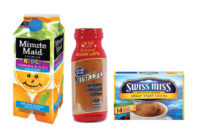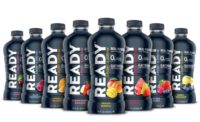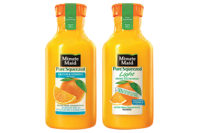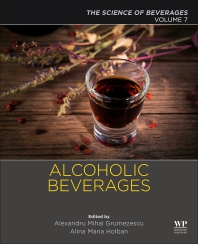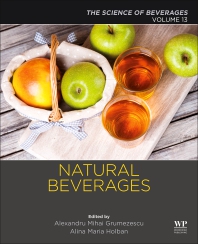
It’s not only the unsteady economy giving people aches and pains today. The World Health Organization estimates that about 10 percent of the world’s population aged 60 and older experience painful, often debilitating, symptoms related to osteoarthritis, reports the Chicago-based research firm Euromonitor International. Further magnifying the issue are a number of other disorders that can damage the joints, including lupus, gout and fibromyalgia, Euromonitor adds.
As the size of the older population grows and continues to show a commitment to fighting the signs of aging by buying products designed to help aesthetically and internally, the market for bone and joint fortification ingredients should continue to grow in step.
“Beverages are an excellent fit for delivering condition-specific benefits such as joint and bone health,” says Paul Dijkstra, chief executive officer at InterHealth Nutraceuticals, Benicia, Calif. “Beverages naturally fit within consumers’ normal lifestyles. It is a significant advantage if consumers can consume products with functional ingredients without having to make changes in their daily activities or remember to take supplements.”
The market for fortified beverages has and will grow, experts agree, but the supplement industry is no weakling. Joint and bone health top the charts of conditions alleviated by supplements, they say. Currently, glucosamine is the world’s best-selling dietary supplement for joint health, and the world’s third-ranking non-herbal dietary supplement, Euromonitor reports.
“Glucosamine is a substance required for the synthesis of components essential to tendons, cartilage and synovial fluid,” Euromonitor reports. Chondroitin, which is often sold in combination with glucosamine, “serves as a substrate for the formation of the joint matrix structure,” it says. Global value sales of glucosamine dietary supplement products reached almost $2 billion in 2008, Euromonitor reports
Eggshell membrane (ESM) is an upcoming ingredient that could begin to play a role in the joint and bone health market, according to Euromonitor. ESM contains glucosamine, chondroitin, hyaluronic acid and collagen, “all of which are essential building blocks of joint and connective tissue,” Euromonitor reports. ESM also includes collagen, which is a protein and principal constituent of connective tissue, and it has hyaluronic acid which is “an essential constituent” of synovial fluid, known to lubricate and nourish joints, Euromonitor reports.
Proven results
Many of the existing fortifying ingredients continue to offer big benefits in the effort to improve bone and joint health.
According to proprietary research from Cargill, Minneapolis, 45 percent of adults suffering from joint problems are likely to use glucosamine-fortified foods and beverages.
“Consumers would like to see options for the consumption of their glucosamine-related products other than a pill, capsule or powder,” says Mike Fleagle, Cargill’s brand manager for Regenasure glucosamine. Cargill’s Regenasure product has exceeded the growth of the company’s glucosamine-related supplements, he says.
Fleagle emphasizes that not all glucosamine is alike. Cargill’s, for one, is produced in the United States, is generally recognized as safe (GRAS) and is suitable for vegetarians and those with shellfish allergies. The product can be added as a “drop-in” ingredient and is compatible in acidic environments, he says.
“In fact, that is where stability of the ingredient is best,” adds Chuck Ray, Cargill’s technical services manager, Corn Milling North America. Regenasure can be used in fruit and vegetable juices, functional waters, sports drinks, flavored teas, smoothies and yogurt.
Helping to combat the release of destructive collagen-specific T cells, InterHealth’s UC-II also targets joint health, and is particularly user-friendly in beverage applications, the company says.
The natural collagen concentrate has been shown to improve joint health and has been granted GRAS designation, InterHealth’s Dijkstra says. It is single sourced, manufactured in the United States and applicable to juice-based and dairy-based beverages. UC-II helps to stop “a destructive cycle” and “helps to promote collagen-building activities that are part of normal cartilage remodeling process — for long-term benefits,” Dijkstra says. He adds that UC-II requires only a daily dose.
It’s an “ideal candidate for new product developments or inclusion in existing formulations for great efficacy,” Dijkstra says. “The latest in bone health products will highlight synergistic relationships between different ingredients, with the inclusion of natural, plant-based ingredients that work with calcium for maximum bone health benefits.”
There’s no debate that milk, dairy-based beverages and calcium or calcium-enriched products help promote strong bones and the nutrients within work together naturally to support bone and joint health, but the issue is whether everyone is getting enough.
Vitamin D supports calcium metabolism, points out Judith Jarvis, director of dairy science communications for the National Dairy Council, Rosemont, Ill.
“Vitamin D helps maintain normal serum calcium and phosphorous levels by enhancing their absorption,” Jarvis says. “Vitamin D also works with parathyroid hormone to help maintain adequate serum calcium and phosphate levels to enable bone mineralization.”
Milk has been fortified with vitamin D since the 1930s, Jarvis says. But meeting the suggested requirements is tough, with only three out of 10 individuals consuming the recommended daily intake of vitamin D, according to a national survey conducted in 2006, Jarvis cited.
“Dairy-based beverages fortified with bone-building nutrients such as calcium and vitamin D can assist consumers in meeting nutrient recommendations,” she adds.
Formulation challenges
When it comes to fortified beverages, performance is key, but the delivery mechanism and taste need to appeal to consumers in order to generate trial and continued usage.
Calcium, for one, generates high demand but has its share of formulation challenges, and some forms are not soluble. Ram Chaudhari, senior executive vice president and chief scientific officer at Schenectady, N.Y.-based Fortitech says “you can overcome some of this problem by pH and buffering capacity.” Buffering, he adds, prevents settling at the bottom of the container.
According to a Fortitech report, a number of market forms of calcium are available to boost a product’s calcium content, so the real challenge is to select the correct one. The ultimate goal is to deliver the desired level of the mineral without affecting the flavor, solubility, bioavailability, sensory properties and the mouthfeel of the product, the report emphasizes.
Fortitech recommends a blend of calcium sources to best overcome any processing issues.
“The most important thing is to establish the composition of the finished product - the form of delivery,” Chaudhari says. “Once you know that, you have to choose an appropriate ingredient to optimize texture, stability and all those aspects involved in the process. If you don’t pick the right one, you’ll have a problem with taste, color, sediment.
“Consumers are always looking for value and performance of nutrients, along with good taste,” he adds. “… I would say that everyone wants a magic pill, a solution, but moderation is the key here. There are limitations. You cannot add a heavy dose of some vitamins because you just don’t need them. It’s not twice as much good with twice as much – there is an optimum level.”
Delivery of fortifications via food and beverages is ideal so the ingredients will work to their fullest potential, he adds. “You need macronutrients along with micronutrients,” Chaudhari says. “If you have the food and beverage vehicle, there is a better chance of absorption.”
Ewa Hudson, Euromonitor’s head of health and wellness research, agrees. She says that fortified food and beverages provide more of a preventative approach than simple supplements do. And the preventative approach is a big part of the battle for today’s consumers.
Euromonitor reports that parents and aging baby boomers are key markets to target for these products because they are currently contending with issues of their own or hoping to prevent issues for their growing children. However, the 40-plus crowd also hopes to fend off any impending issues as they age.
Fortitech’s Chaudhari agrees and adds active-lifestyle people to the list of key demographics. “They want prevention with nutrition rather than medication,” he says.
Bright future
Experts agree that fortifying beverages to help improve joint and bone health is a movement that will continue to grow because it offers functional and high-performing solutions, and the science is far from tapped.
“Innovation continues to be a strong driver in both the dietary supplement and food and beverage industries,” InterHealth Nutraceuticals’ Dijkstra says. “It seems the future market is ready for innovation with new ingredients and products that are all-natural, clinically proven to work and that are safe.”
Chaudhari says innovation will go even further, into “personalized nutrition.” He says “nutrigenomics” is the future, which is nutrition based on genetics.
“Everyone has different genomes, so needs are different,” he explains. “We try to lump together the human population, but everyone is different – some need less folic acid, some need more antioxidant protection. It depends on genes and lifestyle, and it’s coming up more and more every day.” BI
Related Links:



